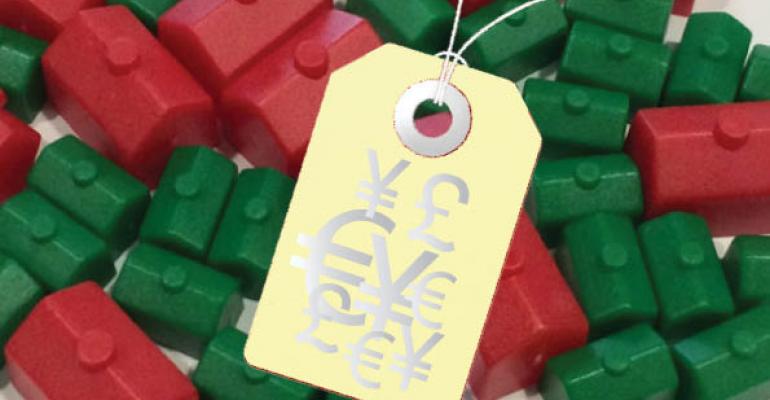U.S. apartment properties still look good to foreign investors.
“We expect foreign capital flows into the U.S. to increase,” says Chris Akins, senior managing director of multifamily with CBRE Capital Markets. “The U.S. market continues to be a safe haven for foreign capital.”
Real estate in the U.S. is attractive to investors from overseas and apartment properties are especially alluring, according to the latest survey of the members of the Association of Foreign Investors in Real Estate (AFIRE), released January 3. Their money continues to flow into the apartment sector both directly and indirectly, through partnerships and intermediaries. Still, in the 2017 AFIRE survey, multifamily came in second to industrial properties in terms of level of foreign investors’ interest. Last year multifamily and industrial tied for first place.
Foreigners looking for U.S. assets once invested overwhelmingly in trophy properties like office towers in gateway cities. In recent years, however, the apartment sector became more favored. “The institutional nature of apartment investing is unique to the U.S,” says Akins. “With continued education, foreign investors realize that investing in multifamily offers a terrific balance for their portfolios.”
Despite that enthusiasm, the amount of international money invested in last year and this year in U.S. apartment properties is still down from the peak year of 2015. “The numbers are still coming in, but it’s not going to be anywhere near 2015,” says Jim Costello, senior vice president with New York City-based research firm Real Capital Analytics (RCA). Several giant portfolios of apartment properties traded in 2015, including sales to foreign investors—those deals don’t come around every year.
The amount of the money coming into the apartments sector from overseas can also be hard to track. “Many internationals invest indirectly through U.S. partnerships and funds,” says Akins. From analyzing transactions conducted directly, in the last couple of years apartment assets deals have accounted for about 5 to 7 percent of transactions with foreign buyers, she says.
Institutions from overseas in particular have become more comfortable with investing in U.S. apartment properties. “To be diversified, an international institution needs multifamily in the mix of U.S. properties,” says Dan Cashdan, president and executive managing director with capital services provider HFF Securities. These institutions often form long-term partnerships with U.S. apartment companies. “They are very curious to find the right partner to help them grow a portfolio.”
Foreign investors are also participating in new apartment development. “Out of every five or eight development deals, one will have foreign equity,” says Cashdan. This equity has become more important for developers as U.S. construction lenders become more cautious and make smaller loans.
International investors are also stretching beyond the “gateway” cities like Boston, Los Angeles and New York City that they are most familiar with. “Some investors are looking for more yield in today's market and are investing in top locations in secondary markets,” says CBRE’s Akin.

